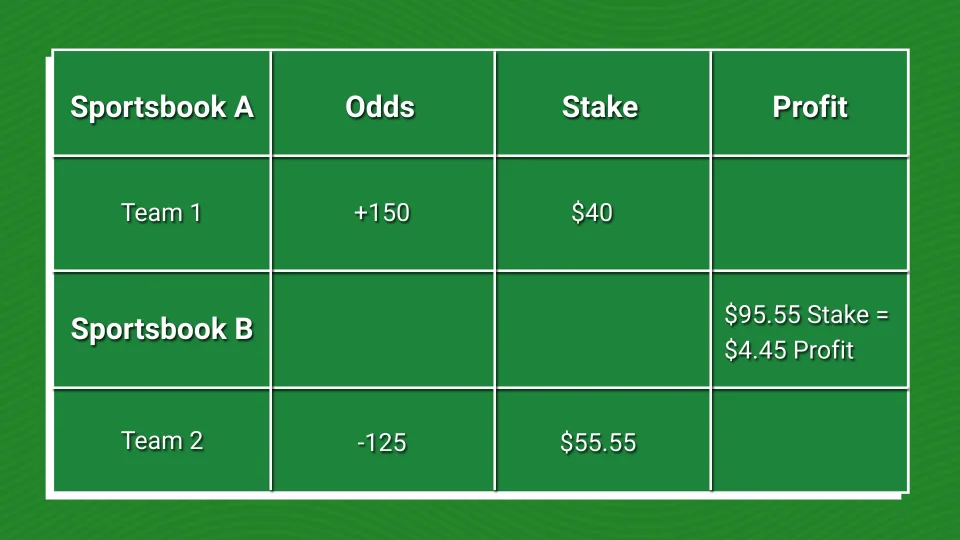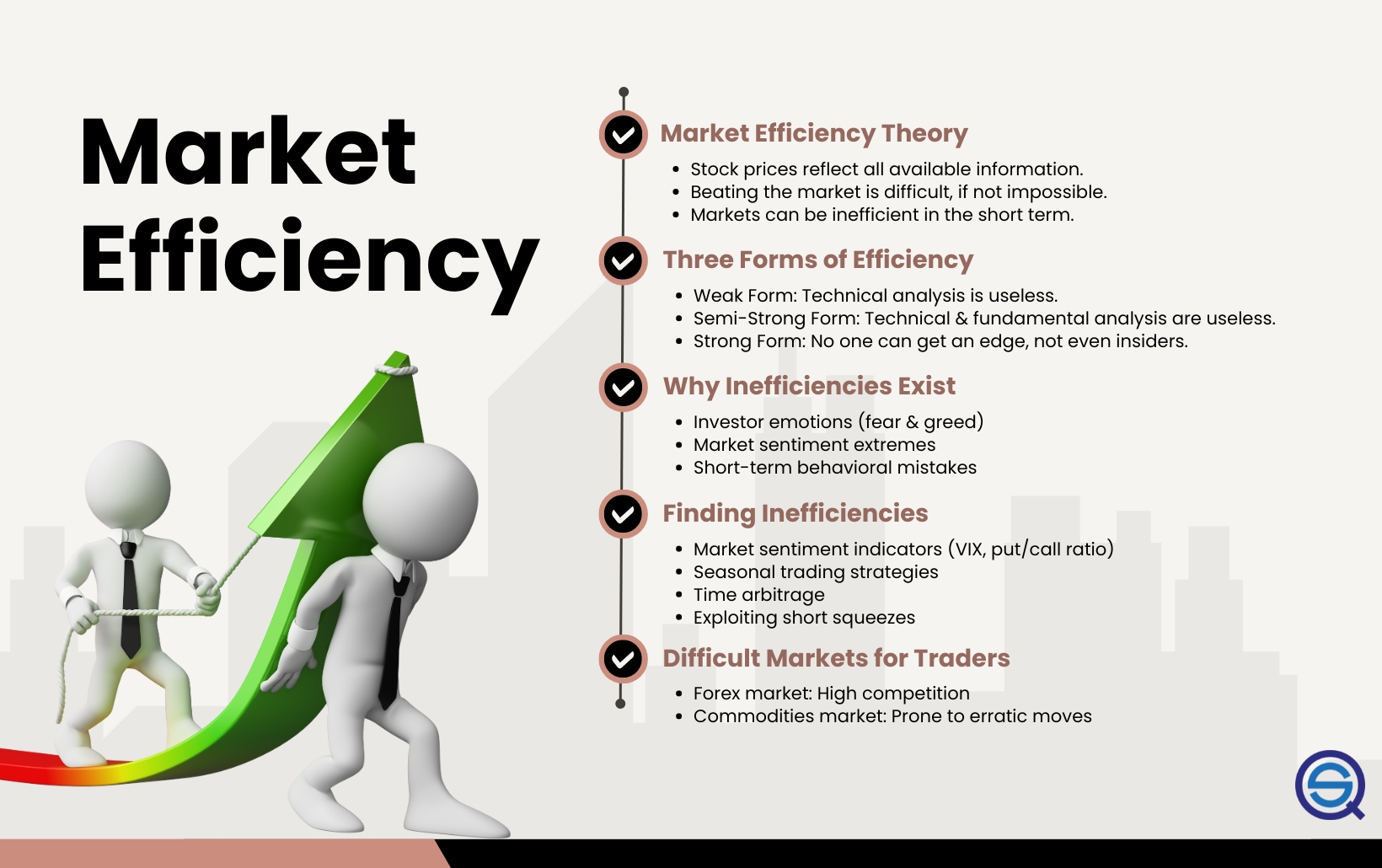Did you know that the word "arbitrage" comes from the French term meaning "to take advantage"? In the fast-paced world of day trading, developing an effective arbitrage plan is crucial for seizing profitable opportunities. This article dives into the essentials of day trading arbitrage, explaining what it is, how it works, and the key components necessary for a successful strategy. You’ll learn to identify arbitrage opportunities, the tools needed for execution, and effective risk management techniques. Moreover, we’ll explore the best markets for arbitrage, common pitfalls to avoid, and how to adapt your plan to market trends. By the end, you’ll be equipped with the knowledge to evaluate your day trading arbitrage success and ensure compliance with legal considerations—all valuable insights brought to you by DayTradingBusiness.
What is Day Trading Arbitrage?
Day trading arbitrage involves exploiting price differences of the same asset across different markets or exchanges within the same trading day. To develop a day trading arbitrage plan, follow these steps:
1. Identify Opportunities: Monitor multiple markets for price discrepancies in the same asset.
2. Set Criteria: Define your entry and exit points based on risk tolerance and profit goals.
3. Utilize Technology: Use trading software for real-time data analysis and fast execution.
4. Risk Management: Establish stop-loss orders to limit potential losses.
5. Test Your Strategy: Backtest your plan with historical data to refine it before trading with real money.
6. Stay Informed: Keep up with market news that may affect asset prices.
Implement these steps to create a robust day trading arbitrage plan.
How Does Day Trading Arbitrage Work?
Day trading arbitrage involves exploiting price discrepancies across different markets or exchanges. To develop a day trading arbitrage plan, follow these steps:
1. Identify Markets: Choose the assets and exchanges where you see price differences; popular options include stocks, ETFs, or cryptocurrencies.
2. Set Up Trading Tools: Use trading software that provides real-time data and alerts on price movements across various platforms.
3. Calculate Costs: Consider transaction fees, taxes, and slippage to ensure your potential profit outweighs these costs.
4. Monitor Spreads: Keep an eye on the bid-ask spreads. Ideal arbitrage opportunities arise when these spreads widen.
5. Execute Quickly: Speed is essential. Develop a strategy for quick execution, possibly using automated trading bots.
6. Manage Risks: Set stop-loss orders and diversify trades to mitigate risk from sudden market shifts.
7. Review and Adjust: Regularly analyze your trades to refine your strategy and improve your decision-making.
By following these steps, you can effectively implement a day trading arbitrage plan that capitalizes on market inefficiencies.
What Are the Key Components of an Arbitrage Plan?
The key components of a day trading arbitrage plan include:
1. Market Selection: Identify the markets or assets you want to trade, such as stocks, ETFs, or cryptocurrencies.
2. Price Discrepancy Identification: Set up tools or algorithms to spot price differences between different exchanges or within the same asset.
3. Execution Strategy: Develop a fast execution plan to capitalize on identified discrepancies before they close.
4. Risk Management: Define stop-loss limits and position sizing to protect your capital against adverse price movements.
5. Transaction Costs Assessment: Calculate fees, commissions, and slippage to ensure profitability.
6. Monitoring Tools: Use real-time data feeds and alert systems to stay updated on market changes.
7. Performance Tracking: Regularly review trades and strategies to refine your approach and improve efficiency.
Each component is crucial for a successful arbitrage strategy in day trading.
How Do I Identify Arbitrage Opportunities in Day Trading?
To identify arbitrage opportunities in day trading, start by monitoring price discrepancies across different exchanges or markets. Use tools like trading bots or software to track real-time price movements. Look for assets with high volatility and low correlation among exchanges. Set specific criteria for entry and exit points based on historical data analysis. Always consider transaction costs to ensure the opportunity is profitable. Regularly refine your strategy based on market conditions and backtest it to improve accuracy.
What Tools Are Essential for Day Trading Arbitrage?
Essential tools for day trading arbitrage include:
1. Trading Platform: Choose a robust platform like Interactive Brokers or Thinkorswim for real-time trading and analytics.
2. Market Data Feed: Use a reliable data feed service like Bloomberg or Reuters for accurate, fast market information.
3. Arbitrage Software: Utilize specialized software like QuantConnect or Arbitrage-Analyzer to identify price discrepancies.
4. Risk Management Tools: Implement tools like stop-loss orders and position sizing calculators to manage risk effectively.
5. Technical Analysis Tools: Leverage charting software like TradingView for technical indicators and trend analysis.
6. News Aggregators: Stay updated with platforms like Benzinga or Yahoo Finance for market-moving news.
Each tool plays a crucial role in executing a successful day trading arbitrage strategy.
How Can I Manage Risk in Day Trading Arbitrage?
To manage risk in day trading arbitrage, follow these steps:
1. Set Clear Entry and Exit Points: Define your buy and sell levels before entering a trade to avoid emotional decision-making.
2. Use Stop-Loss Orders: Implement stop-loss orders to limit potential losses on each trade.
3. Diversify Strategies: Don't rely on a single arbitrage strategy; explore multiple opportunities to spread risk.
4. Limit Position Size: Only allocate a small percentage of your capital per trade to minimize exposure.
5. Monitor Market Conditions: Stay updated on market news and trends that could affect pricing discrepancies.
6. Practice Risk-Reward Analysis: Assess the potential reward versus the risk for each trade to ensure favorable outcomes.
7. Regularly Review Performance: Analyze your trades to identify patterns, successes, and areas for improvement.
By incorporating these practices, you can effectively manage risk in day trading arbitrage.
What Strategies Can I Use for Day Trading Arbitrage?
To develop a day trading arbitrage plan, consider these strategies:
1. Identify Price Discrepancies: Monitor multiple exchanges for the same asset to spot price differences. Use real-time data feeds for accuracy.
2. Automate Trades: Implement trading algorithms that can execute trades instantly when discrepancies arise. Speed is crucial in arbitrage.
3. Diversify Asset Classes: Explore arbitrage opportunities across stocks, cryptocurrencies, and commodities to increase potential profits.
4. Leverage Margin: Use margin trading to amplify gains, but be cautious of the associated risks.
5. Focus on Low Latency: Choose a broker with low latency to minimize delays in execution, enhancing your chances of profit.
6. Manage Risk: Set strict stop-loss orders to protect against market volatility. Know your risk tolerance.
7. Stay Updated: Keep abreast of market news and events that could impact asset prices and create arbitrage opportunities.
8. Backtest Strategies: Use historical data to test your arbitrage strategies before deploying real capital.
Implement these strategies to create a robust day trading arbitrage plan.
How Do I Set Up My Trading Account for Arbitrage?

To set up your trading account for arbitrage, follow these steps:
1. Choose a Broker: Select a broker that allows multiple asset types and has low fees.
2. Open an Account: Complete the application process, providing necessary identification and financial information.
3. Fund Your Account: Deposit sufficient capital to cover your trading strategies and potential margins.
4. Select Trading Platforms: Use platforms that offer real-time data and advanced trading tools.
5. Create a Strategy: Develop a clear arbitrage plan, identifying price discrepancies across markets or assets.
6. Set Up Alerts: Configure alerts for price changes to act quickly when arbitrage opportunities arise.
7. Practice with a Demo Account: Test your strategy in a demo environment before trading real money.
8. Monitor Your Trades: Continuously track your trades and adjust your strategy based on performance.
This setup will enable you to effectively exploit arbitrage opportunities in day trading.
What Markets Are Best for Day Trading Arbitrage?
The best markets for day trading arbitrage include stocks, forex, and cryptocurrencies. Look for high liquidity and volatility to maximize opportunities. In stocks, focus on ETFs and large-cap companies. For forex, major currency pairs like EUR/USD and USD/JPY are ideal. In cryptocurrencies, trade on multiple exchanges to exploit price differences. Monitor spreads and execution times closely to ensure profitability.
How Do I Calculate Potential Profit from Arbitrage?

To calculate potential profit from arbitrage, follow these steps:
1. Identify Price Discrepancies: Find the same asset priced differently on two markets.
2. Calculate Cost: Factor in transaction fees, taxes, and commissions for both buying and selling.
3. Determine Profit: Use the formula: Profit = (Sell Price – Buy Price) – Total Costs.
4. Consider Volume: Multiply the profit per unit by the number of units you plan to trade.
For example, if you buy an asset for $100 and sell it for $105, with $2 in fees, your profit is ($105 – $100) – $2 = $3 per unit. Adjust your calculations based on market conditions and risks involved.
What Are the Common Mistakes in Day Trading Arbitrage?
Common mistakes in day trading arbitrage include:
1. Ignoring Transaction Costs: Not accounting for fees can eat into profits.
2. Over-leveraging: Using too much leverage increases risk and can lead to significant losses.
3. Lack of Research: Failing to understand the assets involved can lead to poor decisions.
4. Poor Timing: Executing trades too late can eliminate arbitrage opportunities.
5. Inadequate Risk Management: Not setting stop-loss orders can result in larger losses.
6. Emotional Trading: Letting emotions dictate trades often leads to mistakes.
7. Neglecting Market Conditions: Ignoring overall market trends can impact arbitrage effectiveness.
To develop a solid day trading arbitrage plan, focus on minimizing these mistakes through thorough research, disciplined trading, and effective risk management strategies.
Learn about Common mistakes that increase stop-loss risk in day trading
How Can I Monitor Market Conditions for Arbitrage?
To monitor market conditions for arbitrage, use real-time data feeds and trading platforms that provide live pricing information across multiple markets. Set up alerts for price discrepancies between correlated assets. Utilize tools like price comparison websites and financial news aggregators to stay updated. Analyze historical data to identify patterns and trends that may indicate potential arbitrage opportunities. Regularly review trading volumes and liquidity to ensure optimal execution.
What Role Does Timing Play in Day Trading Arbitrage?

Timing is crucial in day trading arbitrage because it directly affects the profitability of trades. Executing trades at the right moment ensures you capitalize on price discrepancies before they close. Fast execution is essential; delays can erode potential gains. Monitoring market movements and news can help identify the best times to enter or exit positions. Additionally, understanding market hours and volatility patterns can optimize your strategy, allowing you to seize opportunities quickly and efficiently.
Learn about What Role Does Compliance Play in Day Trading Platform Certification?
How Do I Adjust My Plan Based on Market Trends?
To adjust your day trading arbitrage plan based on market trends, start by regularly analyzing market data and price movements. Identify key indicators such as volatility, volume, and news events that influence price changes. If you notice a trend, adapt your strategies by increasing or decreasing your position sizes accordingly. Use stop-loss orders to protect your capital during downturns. Keep an eye on correlated assets; if one moves significantly, reassess your arbitrage opportunities. Regularly backtest your strategies with historical data to ensure they align with current market conditions. Lastly, stay flexible and ready to pivot when trends shift.
What Legal Considerations Should I Be Aware of in Arbitrage Trading?
In arbitrage trading, be aware of these legal considerations:
1. Regulatory Compliance: Ensure you comply with trading regulations set by authorities like the SEC or CFTC.
2. Market Manipulation Laws: Avoid practices that could be construed as market manipulation, such as wash trading.
3. Tax Implications: Understand the tax treatment of arbitrage profits in your jurisdiction, as they may be subject to capital gains tax.
4. Brokerage Agreements: Review the terms and conditions of your brokerage, focusing on commissions and restrictions on trading strategies.
5. Insider Trading Regulations: Never use non-public information for trading, as this violates insider trading laws.
6. Cross-Border Trading Laws: If trading in multiple countries, be aware of differing regulations and compliance requirements.
7. Disclosure Obligations: If trading on behalf of others, ensure you meet disclosure and fiduciary duty requirements.
Stay informed about changes in regulations that may affect your arbitrage strategy.
How Can I Evaluate the Success of My Day Trading Arbitrage Plan?
To evaluate the success of your day trading arbitrage plan, track key metrics such as profit margins, win rate, and risk-reward ratio. Monitor your executed trades and compare them against benchmarks to assess performance. Analyze your return on investment (ROI) and the time taken for trades to execute. Regularly review your strategies to identify strengths and weaknesses. Adjust based on market conditions and ensure your plan meets your financial goals.
Learn about How Do Prop Firms Evaluate Day Trading Performance?
Conclusion about How to Develop a Day Trading Arbitrage Plan
In conclusion, developing a robust day trading arbitrage plan requires a clear understanding of the market dynamics, effective risk management, and the utilization of essential tools and strategies. By identifying opportunities and continuously monitoring market conditions, traders can enhance their chances of success. Remember, consistency and adaptability are key; refine your approach based on market trends and learn from common pitfalls. For those seeking expert guidance and in-depth resources, DayTradingBusiness is here to support your trading journey.
Learn about How to Develop a Risk Management Plan for Day Trading